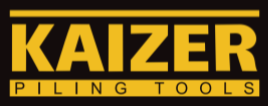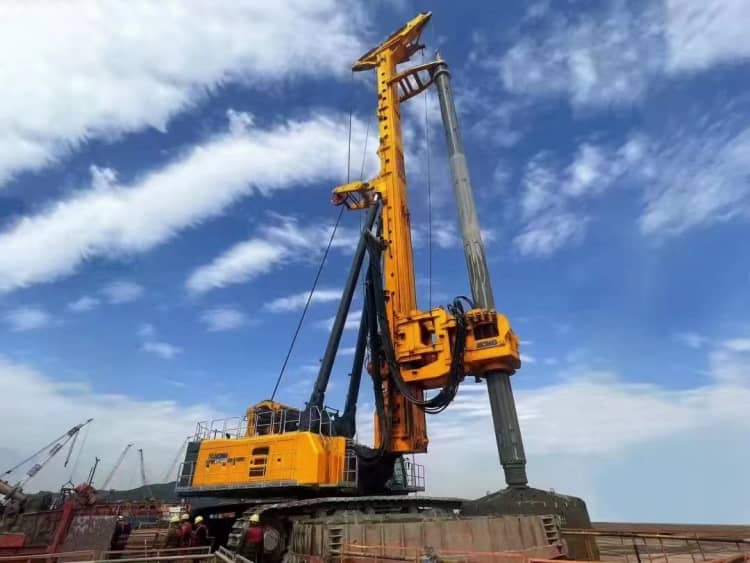Introduction
Rotary drilling rigs are widely used in municipal construction, highway bridges, high-rise building foundations, and other ground foundation projects. Equipped with various drilling tools, they are suitable for dry (short auger), wet (rotary bucket), and rock (core drill) drilling operations. These rigs adapt to most soil and geological conditions in China, making them versatile for bridge construction and high-rise building foundations. Therefore, a technical discussion on construction preparation and the commonly used clear water construction process is essential.
Construction Preparation
1. Documentation Preparation
- Geological and Hydrological Data: Obtain site-specific engineering geological and hydrogeological data before construction, along with pile foundation construction drawings and design review records.
- Underground Survey: Investigate underground pipelines (pipes, cables), structures, hazardous buildings, and sensitive facilities in the vicinity.
- Equipment and Material Testing: Ensure technical performance data for main machinery and supporting equipment. Conduct physical property tests on materials and prepare concrete mix ratios through certified laboratories.
- Construction Plan: Develop an effective construction organization plan or method statement, including load and process references.
2. Construction Machinery and Equipment
Required equipment includes:
- Surveying Instruments: Theodolite, level, steel tape measure.
- Drilling Equipment: Rotary drilling rig, welding machine (with valid certifications).
3. Small and Medium-Sized Tools Requirements
- Mixer: Must be stable, with rainproof shelter, functional clutches, brakes, and safety guards. Operators must be certified.
- Handheld Power Tools: Require separate leakage protectors, intact grounding, and undamaged cables.
- Welding Machine: Must have rain protection, proper grounding, and insulated wiring. Operators must be certified.
- Gas Cylinders: Marked with anti-vibration rings. Oxygen and acetylene cylinders must be kept >5m apart, with flashback arrestors installed.
4. Installing Drilling Tools
- Rigidity & Stability: Drilling tools must be rigid to prevent movement during operation, complying with manufacturer standards.
- Drill Bit Selection:
- Short Auger: Suitable for cohesive soil, silt, sand, and weathered rock above the water table.
- Rotary Bucket: Uses slurry wall protection for cohesive soil, silt, sand, gravel, and weathered rock.
- Core Drill Bit: Ideal for gravel, moderately hard rock, and fractured formations.
Clear Water Construction Process
(1) Drilling Process
Rotary drilling involves a bucket drill bit breaking soil/rock and lifting it to the surface cyclically. For stable formations, clear water drilling suffices without slurry support. Unstable or waterlogged ground requires slurry stabilization.
(2) Site Layout Principles
- Level and compact the site, remove debris, and mark pile positions with cross-reference stakes.
- Plan access routes to avoid disturbing borehole walls.
- For shallow water, build an island 1.0m above water level for rig placement.
(3) Pile Positioning
- Use total stations for precise positioning within allowable tolerances.
(4) Rig Positioning
- Inspect rig performance before positioning.
(5) Steel Casing Installation
- Land Construction: Excavate a pit, center the casing, and backfill with compacted clay.
- Underwater Construction: Ensure casing penetrates hard strata by ≥0.5m and extends 1.5–2.0m above water level.
- Specifications:
- 4–6mm thick for ≤4m lengths; 6–8mm for >4m.
- Weld multi-section casings for deep installations.
- Maintain ≤1% deviation during installation.
(6) Drilling Operation
- Clear Water Drilling: Monitor depth via onboard display, using drill weight and pressure for advancement.
- Slurry Drilling: For unstable formations, inject slurry to stabilize walls.
- Procedure:
- Position the rig and align the mast vertically (±5°).
- Start drilling, recording depth, and soil samples.
- Remove cuttings and dump into waste containers.
- Repeat until design depth is reached.
(7) Geological Recording
- Log soil layers, drilling speed, and depth in a Boring Log.
- Preserve samples in labeled boxes for verification.
- Report discrepancies to engineers for design adjustments.
(8) Hole Inspection
- Check depth, diameter, verticality, and wall integrity.
- For dry holes, compact loose soil with a hammer; for wet holes, use pump-assisted cleaning.
(9) Hole Cleaning
- Primary Cleaning: Circulate fresh slurry for ≥ 30 min to reduce sediment.
- Secondary Cleaning: Perform after installing rebar cages to ensure sediment thickness meets standards (<4% sand content).
Conclusion
Proper preparation and adherence to clear water or slurry drilling processes ensure efficient, high-quality rotary drilling operations. Rigorous inspections and real-time monitoring minimize risks, enhancing project success in diverse geological conditions.


